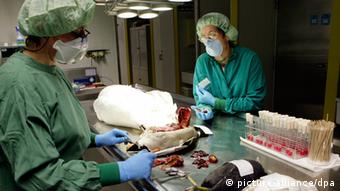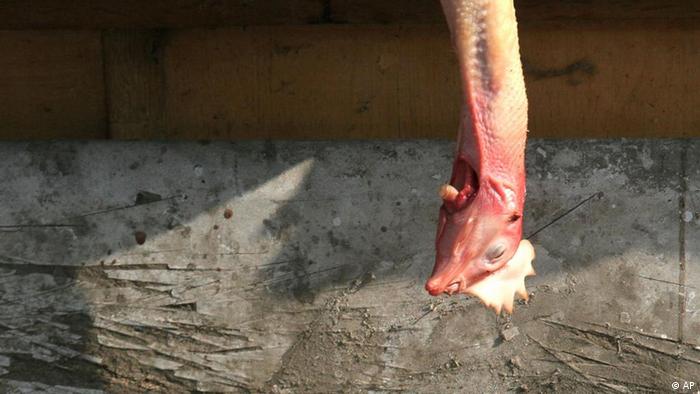and the rest of the world..
WVEC.com
Posted on January 30, 2013 at 4:14 PM
HAMPTON ROADS-- As if severe flu season isn’t enough, Virginia is being hit with a new strain of norovirus, sometimes called “stomach flu.”
The Centers for Disease Control and Prevention says this strain is highly contagious. It spreads easily in schools, nursing homes and other enclosed areas.
Despite being referred to as stomach flu, norovirus is not really the flu, which is a respiratory infection. Norovirus inflames the stomach and intestines which causes stomach pain, vomiting, and diarrhea.
Some people may also have a low-grade fever, chills, headache, body aches and fatigue. These symptoms can show up suddenly from one to three days after you are exposed to the virus.
To avoid infection Wash your hands frequently to stop the viruses from spreading. Help children wash their hands thoroughly. Also wash fruits and vegetables carefully and cook shellfish before eating.
When somebody does become sick make sure you disinfect areas in the home and at work.
If you do come down with “stomach flu,” you should drink plenty of liquids to avoid dehydration. You should usually feel better after two or three days.
This norovirus strain is called the Sydney strain because it started in Australia and has caused outbreaks around the world. http://www.wvec.com/news/New-norovirus-strain-hits-Virginia-189079411.html
...BALTIMORE (WJZ) — We’re still coping with flu season but now there’s another outbreak of a highly contagious illness. A dangerous strain of norovirus is spreading fast.
Meghan McCorkell has the warning from doctors.
Doctors are seeing more cases of norovirus come in and they say this year’s strain is particularly aggressive.
We’re in the middle of one of the worst flu seasons.
“You’re just so weak and every part of your body hurts and aches,” said flu patient Joe Gleba.
Another illness is spreading fast. More than 140 outbreaks of a dangerous new strain of norovirus have now been reported in the U.S.
“It’s very contagious. There are multiple epidemics of it. Other than cleaning the areas, there’s not a whole lot people can do about it,” said Dr. Gary Simon, George Washington University Hospital...
video
Sydney 2012 norovirus strain continues to spread globally
Published on January 30, 2013 at 9:15 AM
By Helen Albert, Senior medwireNews Reporter
A new strain of norovirus known as Sydney 2012 has caused a significant number of acute outbreaks of the infection during the 2012-2013 winter season and continues to spread worldwide.
Writing in the Morbidity and Mortality Weekly Report, published by the Centers for Disease Control and Prevention (CDC) in the USA, Eyal Leshem (CDC, Atlanta, Georgia, USA) and colleagues report that the GII.4 Sydney 2012 strain of the virus has taken over as the most dominant strain in the US this season, being responsible for 53% of all reported cases in the September-December 2012 period.
This strain of norovirus was also responsible for 50%-80% of norovirus cases reported in the UK in the last 3 weeks of 2012 and the first week of 2013, according to the Health Protection Agency (HPA).
Globally, norovirus activity increased significantly at the end of 2012, as reported by Janko van Beek (National Institute for Public Health and the Environment, Bilthoven, the Netherlands) and colleagues in Eurosurveillance earlier this month. They, and other researchers around the world, believe the increased activity is linked to the emergence of the GII.4 Sydney 2012 strain in Australia in March 2012.
Since it was first discovered, the Sydney 2012 strain has been observed in France, New Zealand, and Japan, as well as in the UK and USA.
Over the past 10 years, a new GII.4 strain of norovirus has typically emerged every 2-3 years, often accompanied by an increase in the number of reported infections. However, this is not always the case as there was no significant increase in the number of cases of the infection when the New Orleans strain emerged in the US in 2009.
Mid January figures released by the HPA show that the number of norovirus cases in the UK between week 27 in 2012 and week 1 in 2013 was 56% higher than in the same period last year, rising from 2828 cases in 2011-2012 to 4407 in 2012-2013.
David Brown (HPA, London, UK) told the press: "It is always difficult to predict the norovirus season and this year is no different."
He added: "Noroviruses mutate rapidly and new strains are constantly emerging. At the start of the season it is normal for outbreaks to be caused by a range of different strains. However as the season progresses particular strains are more successful and become dominant."
Lesham and team say that continued surveillance is needed to "enable further assessment of the public health implications of the new GII.4 Sydney strain, including any association with increased severity or level of activity in the ongoing 2012-13 winter norovirus season."




